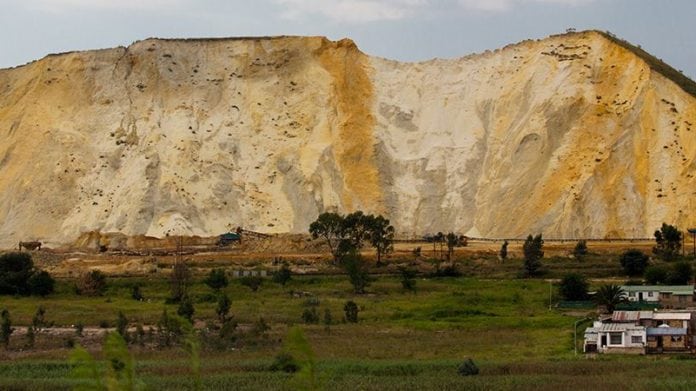
ALL West Wits really wants is “a fair go” at mining responsibly, chairman Michael Quinert said on Thursday.
He was addressing a media briefing to “bust some myths” that have arisen in local media about the ASX-listed group’s plans to mine for gold from open pits and underground near the suburbs of Florida in Roodepoort and Meadowlands East in Soweto.
Local residents have formed action groups to fight West Wits’ application for a mining licence, expressing concerns about noise, dust, and water pollution.
This is a very degraded area – a “moonscape”, in Quinlan’s own words – as a result of past mining. West Wits’ 6,000 hectare site is surrounded by old dumps which are tainting air and water and overrun by illegal miners or zama-zamas.
The legacy of Mintails, another ASX-listed company that treated dumps near Krugersdorp and Randfontein, lingers in popular memory. Mintails was put into business rescue about three years ago, with huge unfunded environmental liabilities.
Communities are opposed to West Wits’ plans because of the legacy they are experiencing from past gold mining, Mariette Liefferink, CEO of the Federation for a Sustainable Environment (FSE) and a well-known local environmental activist, said.
“Mintails left behind massive open pits with no fences or warning signs. Communities are no longer under-educated about the impact of mining and they have seen no medium to longer term benefits, only that future generations will inherit an irreparably destroyed ecosystem, acid mine drainage and dust from tailings storage dams,” she said.
Quinert said West Wits’ assets were never owned by Mintails.
The only connection between the companies was that Mintails held a stake in West Wits which was sold about a decade ago. Although it has no interest in taking over Mintails’ assets as dump processing is not its strategy, West Wits has an interest with other businesses in the area in addressing the problem of the dumps around its site and is making constructive suggestions on how to address it.
West Wits believes by mining responsibly it can help to clean up the area by extracting the near-surface gold that is attracting artisanals and then sealing up the shafts that they are using to go underground.
But some locals have argued that West Wits’ plans are threatening the livelihood of the zama-zamas and it would be a better solution to legalise them and allow them to mine on this site – or at least employ them.
Quinert strongly disagreed.
He said although the zama-zamas were good at finding the reef, they operated in a lawless universe, working hard and drinking hard, which did not make them ideal employees. “We do not believe they are good for the economy. They are too difficult to licence and regulate,” he said.
BLASTING PROMISES
West Wits is targeting a resource of about 3.7 million ounces showing an average grade of 3.6g/t to a cut-off depth of 400 metres. It plans to extract gold from various open pits, each with a life of six to eight months before it will be re-filled, for the first five years and then move underground from years six to 30. Profits from open pit mining will be used to fund underground development.
Although West Wits is being blamed for blasting in the area, this is coming from a dynamite factory nearby and some artisanal activity, Quinert said. Open pit mining will not entail any blasting. West Wits will use a new technology called an Xcentric Ripper, which is attached to an excavator, and is about 30% quieter than a rock hammer.
At this stage it is likely to blast once it goes underground in year six, if it cannot use the Ripper, but he expects those blasts will be too deep to be felt in surrounding residential areas.
There will be no crushing or processing on site. West Wits will use the spare processing capacity in the area owned by companies like Sibanye. It will truck its ore to the processors and is working with property developers to take ore roads away from houses. There will be no tailings dam on this site.
In its submission, the FSE suggested the most practicable solution would not be more open pit or deep underground mining, which creates risks for surrounding communities, but reclamation of the tailings storage facilities that belong to Mintails.











